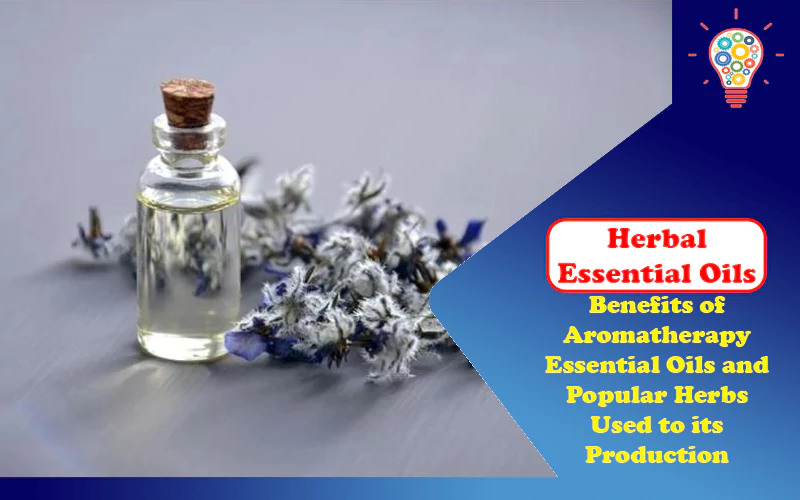The use of aromatherapy essential oils (especially herbal essential oils) has been around for over 6,000 years now. It has been used in the treatment of medical and mood-related disorders. For example, eucalyptus oil has been used to treat cough, eliminate bugs, and disinfect wounds for hundreds of years.
There have been many definitions of aromatherapy, but the most acceptable one from the National Association for Holistic Aromatherapy (NAHA), which defined it as the therapeutic application of aromatic properties (e.g., essential oils) in healing a patient’s health condition. The keyword in this definition is “essential oil,” which the International Standards Organization (ISO) has described as a product gotten from vegetables (as a raw material) through distillation or steaming process.
The ingredients for producing these aromatherapy essential oils are not gotten from a single plant; it has many sources. Fortunately, all the sources have similar chemical properties, including a large proportion of antimicrobial, antifungal, insecticidal, antioxidant, and nematicidal properties. As we stated earlier, these properties are not domiciled in a particular plant; some herbs contain these properties, which we will discuss in this article. But mind you, aromatherapy application of essential oils is used in treating mood-related cases and is also used in massage cases.
Table of Contents
5 Herbs Used for the Production of Aromatherapy Essential Oils
1. Clove Bud
The clove bud oil is extracted from a clove tree. The clove tree is common in Southeast Asia and used for some other herbal products. Also known as the Syzygium aromaticum, the clove oil is extracted through a distillation process. The flower buds are collected from the tree, then made to go through a distillation procedure. Other parts of the tree like the leaves and stems can also be used as for the production of herbal essential oils.
2. Rosemary
The rosemary is a perennial plant that belongs to the mint family. Though popularly used as a seasoning in cooking, it is one of the many herbs used in the production of aromatherapy essential oils. The herbal essential oil from rosemary is use for the treatment of anti-inflammation, heal muscle pain and more.
3. Lemon
Lemons have been known over the years to serve as one of many ingredients used in homemade remedies, but the thing is, you can get herbal essential oil from this same fruit. The oil is extracted from the freshly peeled lemon peels and extracted using the steam extraction method. Though most of the time, the oil can also be extracted through a cold-pressing method which has to do with rotating the peels with the help of a machine while the oil is drips out.
Benefits of Aromatherapy Essential Oils
-
Pain Management
Not just physical pain, aromatherapy essential oils have been known to be useful in treating anxiety, muscle tension, sleep deprivation, and depression. According to Shaheen E. Lakhan, Heather Sheafer, and Deborah Tepper, aromatherapy changes physiological parameters like skin temperature, brain activity, and pulse.
-
Soothe Sore Joints
Essential oils like Clary sage oil and Juniper oil is used in soothing tension in joint. It helps alleviate spasms around the joints area and helps the body relax while healing takes place.
-
Helps in Treating Swelling and Inflammation
Herbal essential oils like Arnica oil and Lemongrass oil are used in the treatment of swelling and inflammation. Lemongrass is known to work faster; it also has a way of soothing the skin. As for Arnica oil, it also has this skin-soothing property that also helps in healing bruises.
Lemon essential oil is used in fighting exhaustion. It also has a way of killing harmful bacteria and viruses and is very useful in treating skin diseases. To apply the lemon essential oil, you must first dilute before application, especially when applying on the skin. And for out-of-body applications, it is released into the air and inspires.
Conclusion
Although essential oils are good for our health, helping us in every capacity, we have to note that they differ in purpose. The essential oil used on adults should not be exactly used on children or pregnant women. Pregnant women are free to use essential oils like Chamomile, Frankincense, Geranium, Lavender, Neroli, Rose, Sandalwood, and Spearmint, but only when they are probably diluted. Also, note that some essential oils are too harsh, dangerous to the nervous system and the kidney when used in excess. For example, essential oils from tea trees and eucalyptus have been found to cause seizures when used wrongly. Again, make sure you get the right product, whether herbal essential oils or ordinary. This is why we will recommend you source it from the long-range of herbal products from Herbaly for uttermost performance.
Read Also: 7 Essential Oils to Prevent and Treat Bug Bites

